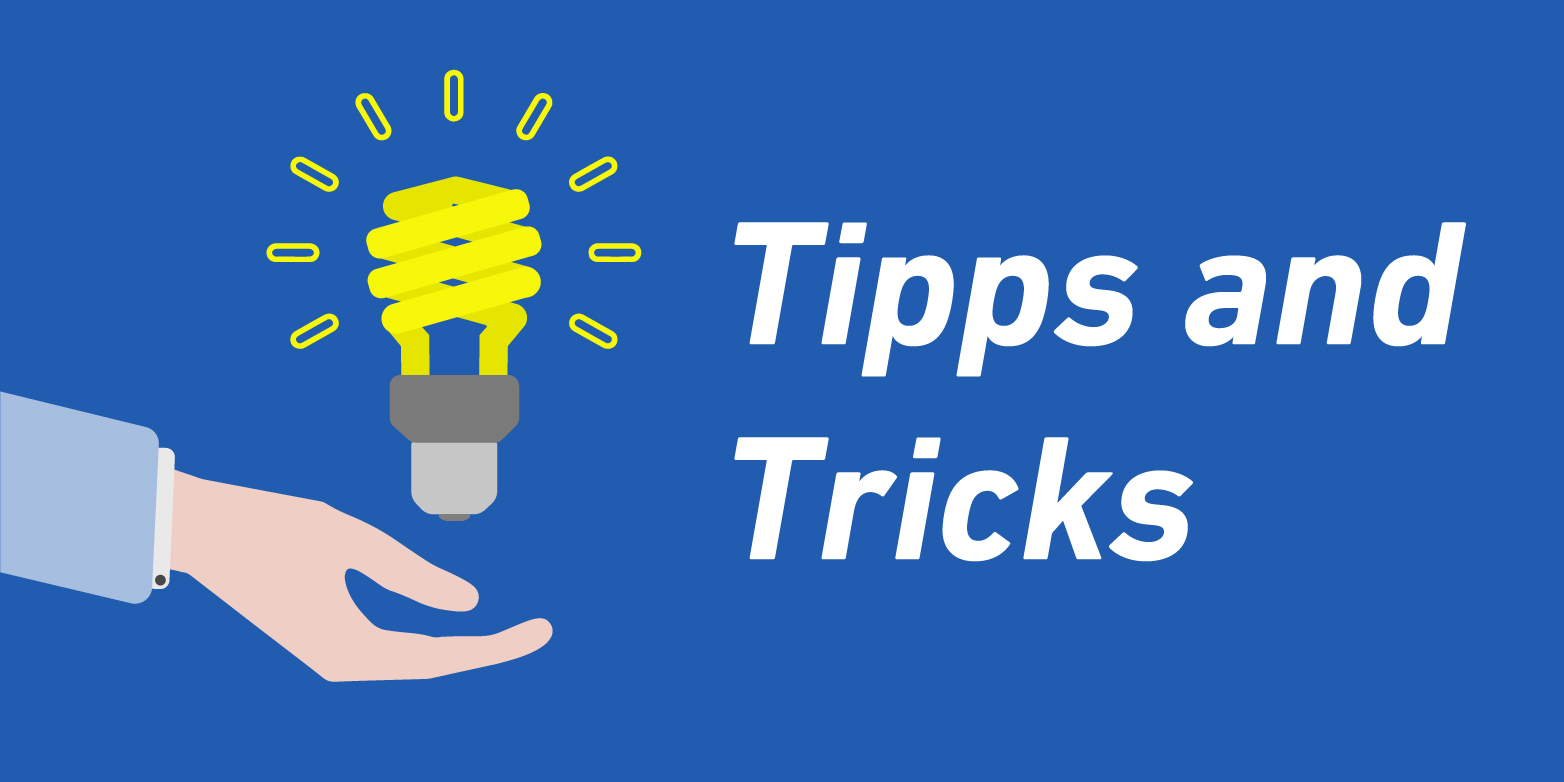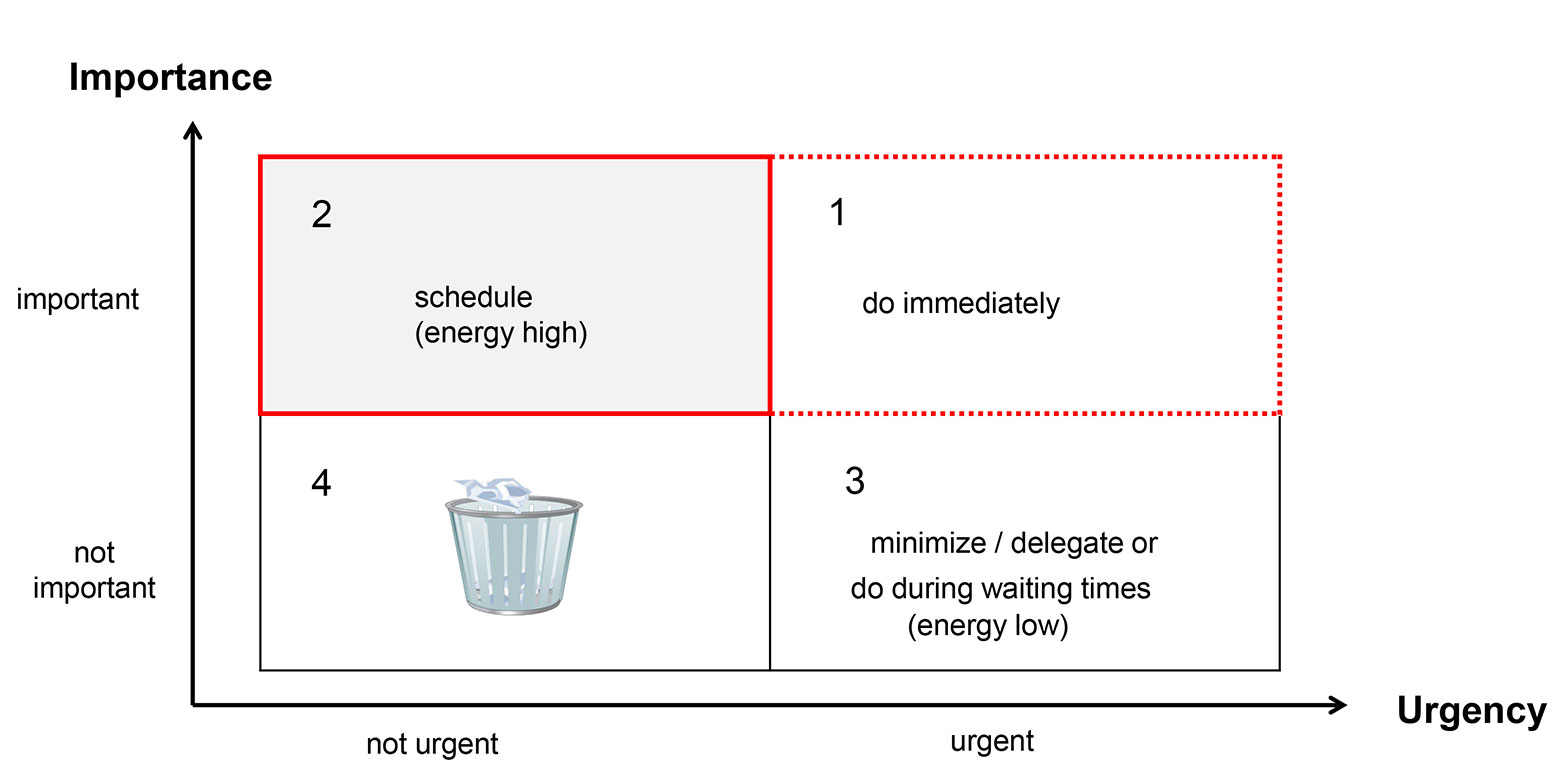The key to staying in control of your workload: good time management
Making productive use of your time at work and feeling that you are actually achieving set goals are both vital for job satisfaction. A few tricks, which anyone can put to use, will help improve your time management.

Albert Einstein is said to have remarked that people who divide up their time are able to use it more profitably. In essence, he was talking about what has now become widely known as “time management”. By this, we mean ways of organising work that help employees make more productive use of their working time and manage it in a way that enhances job satisfaction.
Three principles
Essentially, time management is founded on three practical principles:
- Prioritise your tasks so as to work on those that are genuinely important and that will further you as an employee
- Write down the tasks you are working on each day and assign a fixed time slot to each one of them. Be realistic in how much time you need. Draw on your motivation and your willpower to complete the tasks you have undertaken
- Work in a concentrated way and take a regular break every 90 minutes or so in order to recharge your batteries. Overall, you will then perform your tasks more quickly
Sometimes, however, it can be tricky prioritising in the midst of a busy schedule. What happens, for example, when meetings, assignments or projects are arranged at short notice and flexibility is required in order to plan the rest of your day?
The following considerations will help you set the right priorities:
- What task would I do if I had only four hours this week?
- What would be the consequences in the short, medium and long term if I did this task later or not at all?
- Why am I doing this task right now? Is there perhaps another task that is even more important and would bring me closer to achieving my set goals?
Prioritising in the manner of President Eisenhower
The so-called Eisenhower Matrix offers a simple method of prioritising tasks (see figure). This helps classify tasks according to their urgency and importance, thereby enabling you to see which ones should be tackled right away and which can be left until later.
In the midst of a hectic work schedule, it is often the urgent tasks that are given priority, whereas important ones are readily postponed. The Eisenhower matrix is made up of four quadrants. These show tasks that are both important and urgent, tasks that are either one or the other, and tasks that are neither. It is to be read as follows:
- Quadrant 1 is the “blue light” quadrant (top right): These are important and urgent tasks that you therefore need to do right away. If all your tasks are in this quadrant, you’re in for a stressful time in the long run.
- Quadrant 2 is the “need-to-do” quadrant (top left): This is the quadrant for long-term projects, strategic tasks, relationship management and recreation. These tasks are important in terms of job satisfaction. It is therefore advisable to assign them a fixed time slot.
- Quadrant 3 is the “(self-)deception” quadrant (bottom right): These are urgent tasks that are more important to others than they are to you. Perform them efficiently, but also be prepared to say “No!” once in a while. This is also where disturbances and interruptions belong
- Quadrant 4 is the “delete” quadrant (below left): These are activities that for you are neither important nor urgent. They should be eliminated or reduced.
Listen to your biorhythms
When planning your schedule, remember that your body cannot deliver the same performance at all times of the day. In the afternoon, between 2 and 4 p.m., for example, your physical output is likely to be lower than it was in the morning. It is therefore better to perform demanding tasks (quadrants 1 and 2) in the morning, when energy levels are high, and simpler ones (quadrants 3 and 4) in the afternoon.
Firmly allocate only around 60 percent of your working time to a fixed schedule, so that you also have time for unexpected developments.
To avoid interruptions when concentrating on a task, it is advisable to mute your smartphone and deactivate any other news or messaging services. You should also inform colleagues – or family, if working from home – that you wish to remain undisturbed.
When working from home, try to strike a good balance between work and leisure. Organise both in a structured way and be sure to keep them strictly separate. Tell others in your work team – or anyone in your family or shared accommodation – when you intend to work and when not. And when finishing for the day, be sure to make a clean cut. Being focused on the job is even more important when working from home.
Always manage your time in a holistic way, including both work and leisure. And do something each day that makes you feel good, even if it’s only something small. This can be particularly beneficial at times when external events – pandemics, wars or economic crises – aren’t exactly conducive to relaxing after work.

Comments
No comments yet